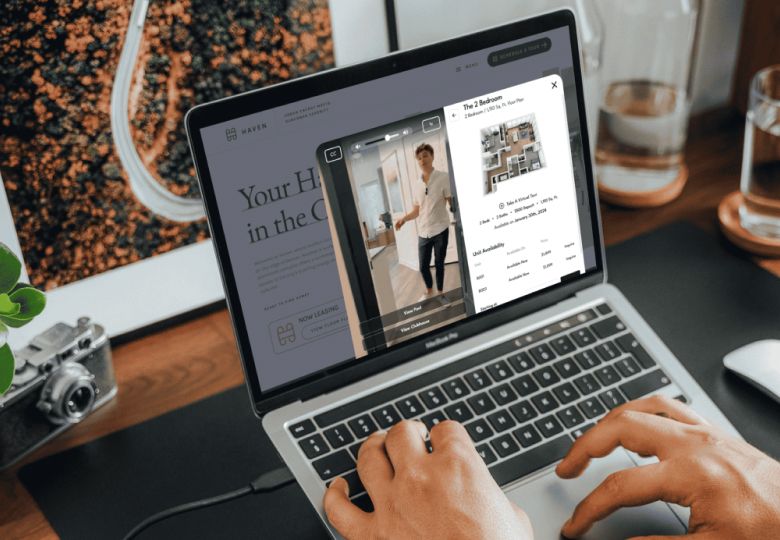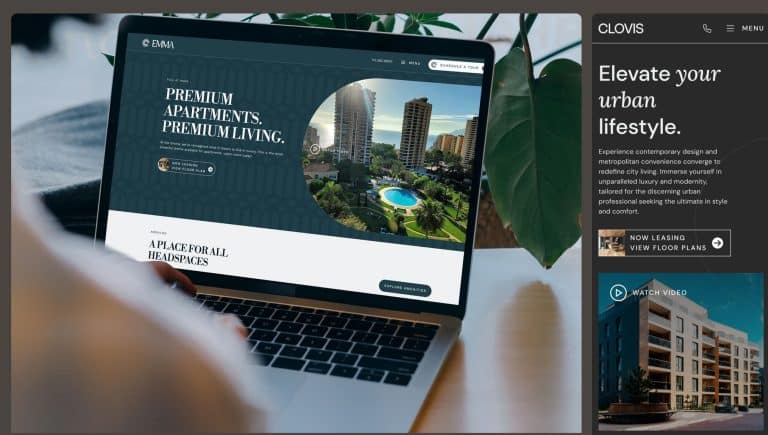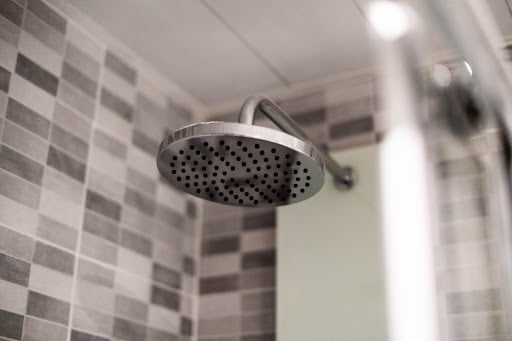What is a Lease Up? [+ Why it Matters]
Finding the right tenants to move in takes time, and that's especially true in new apartment complexes. Lease-up matters, and here is why.

Regional marketing managers and real estate property managers are great at three things (among others, of course):
- Listing
- Marketing
- Filling existing units within their apartment community.
But it takes a real pro to know how to handle a lease-up.
It takes time to find the right tenants to move in. That’s especially true in new apartment complexes in communities full of properties that tenants can move into today.
And that’s why the lease-up is so essential.
If you have a new property under construction, it’s time to start thinking about how you’re going to handle the lease-up process.
From how to prepare to when to begin to how to market your new apartment building, this is everything you need to know about lease-ups (and why they matter).
What is a Lease-Up?
Property managers that work in close contact with developers know all too well what a lease-up is. But those who’ve never tried to rent a unit under construction may not be as familiar with the term.
A lease-up is a pre-leasing period in which property managers seek to find enough tenants to sign leases before the building is move-in ready. The purpose of the lease-up period is to get occupancy rates as high as possible.
The time frame starts when a new apartment building enters the final construction phase and already has a set launch date for opening. It begins with announcing the official open date, and it often lasts about six to twelve months. Or until occupancy rates reach stabilization at 95%.
It’s an effective tool to get tenants to commit to leasing before the building is ready to welcome them in. But it’s also quite tricky to market and convince tenants to buy into an apartment they haven’t seen and can’t yet live in.
To get those tenants in the door, you’ll need to be strategic about how you market and lease your still-under-construction complex.
Tenants Love Lease-Ups: Here’s Why
Most renters would love nothing more than to live in a brand new, beautiful apartment as its first resident. And those units can be hard to come by.
Tenants love lease-ups for that reason and others.
Some tenants may want an escape from out-of-date amenities in the building where they currently live. Others may be looking for elements of luxury and perks that aren’t available in any of the existing apartments on the market.
And quite a few love lease-ups because they often come with freebies.
For a tenant, a lease-up requires a bit of patience. It could be months before they’re handed the keys and given the green light to move in. But many are willing to show patience if you can provide them with some incentives in return.
Lease-ups often include cash incentives, such as free rent for two months, free parking for a specific timeframe, or waived move-in costs.
More creative property managers use other tactics to draw tenants in, such as handing out gift cards or offering reduced rental rates.
Tenants familiar with the concept of leasing up also know that it’s a great way to kick off a fantastic tenant-landlord relationship. After all, those who sign on during the lease-up phase often enjoy extra benefits during their stay.
Check out Our Complete Guide to Virtual Property Management!
Why Does the Lease-Up Period Matter?

The apartment lease-up is vital for several reasons. And property managers must know why they’re doing a lease-up before the lease-up begins.
Why do regional marketing managers need to get their property management teams on board early in the process?
In most cases, it’s because lease-ups promise:
Stabilized Occupancy
To generate enough revenue and make your building profitable, you’ll need to stabilize occupancy rates.
And you’ll want to do so as fast as possible.
For most real estate pros, occupancy isn’t “stabilized” until it reaches 95%. In other words, if you have 200 available units in your building, you’ll need to fill at least 190 of them with rent-paying tenants.
When building a new apartment complex, the goal is to have as many tenants as possible living in (and paying rent for) as many units as possible from day one. With a successful lease-up, you can have 95% of units filled and renters living in your building the day it opens for business.
Cash Flow
It’s always better to have tenants sign leases before the building opens than wait to launch and hope to fill units after the fact.
And that’s because rent = cash flow.
Many property owners rely on the cash flow from incoming rental payments to cover overhead and expenses. That includes paying staff salaries and running and maintaining the building. Others depend on the cash flow from one property to fund construction for their next property.
Either way, you’ll need stabilized occupancy rates to produce the cash flow expected.
Real Estate Market Conditions
The current real estate market conditions can make or break the success of a lease-up.
There’s a good chance that you’re not the only new building in town or the only one that’s still under construction. Think of the lease-up period as a chance to establish brand value. The better you market the property and the more tenants you bring in early, the more valuable the community and other people will think you are.
More brutal market conditions can make this more challenging.
Yet, it’s also an opportunity to position yourself as the frontrunner in apartment leasing in your city or region. The success of one lease-up property can make a difference in how your next lease-up goes.
Why?
Well, if you become “that building” where every unit sells out before it ever opens, prospective residents may be more inclined to sign a lease with speed. Tenants that want to live in your next building may assume that it’ll fill up as fast as your last one did.
The more competition you have to face in the market, the more valuable this perception of your company will be.
Increase Occupancy Rates When the Lease-Up Ends
Most tenants feel more comfortable leasing an apartment in an almost full building than renting in one with dozens of empty units.
It’s sort of like when you walk into a restaurant that has only three or four people dining inside …
Sure, you’ll get seated right away.
But is that a good thing?
Is it empty because the service stinks or the food isn’t any good?
Many people would rather wait an hour for a table at a packed restaurant than being seated right away in an empty one. And people often treat apartment buildings the same way. As a result, it’s easy for a vacant building to get a bad reputation, even if it doesn’t deserve one.
Things To Do Before the Lease-Up Stage Begins

Every lease-up property needs a lease-up strategy. And that means you’ll have to decide what you’re willing to give up in exchange for filling your units early on in the process.
Before a lease-up, you should:
Decide What Incentives to Offer
Can you afford to incentivize prospective tenants with a limited period of free rent?
Is it in your budget to offer free parking for the first few months?
Are you willing to start a referral program where tenants can enjoy some perks if they bring other qualified tenants in?
The more incentives you offer, the more likely you are to fill your units fast. Be sure that the incentives don’t hurt your bottom line, though. But also understand that it may be better to give up a little now than to have a low occupancy rate in the future.
Create an Online Presence
Before you kick off your lease-up, get your website up and running and get your social media profiles in order. No matter what demographic you’re marketing to, you’ll need a solid online presence to show the community who you are.
Put Internal Systems in Place
To have a successful lease-up, you have to do more than get tenants to sign leases.
You need to make their entire experience a good one.
Be sure to have your property managers and maintenance staff in place to serve tenants on day one. Set up an online portal — like RentCafe — where tenants can pay rent, submit maintenance requests, and file complaints.
When a tenant buys in during the lease-up period, they’re putting their trust in you that you’re going to deliver what you promised. So strive to fulfill that commitment and ensure that all your internal systems are in place and ready to go on day one.
Failure to do so will make your tenants peeved, to say the least.
But it can also result in an even weaker lease-up the next time you have a new property with new units to rent.
Create an Apartment Marketing Strategy
For your lease-up to work, you’ll need a strong marketing plan, which means:
- Knowing your target audience
- Creating an offline marketing plan
- Developing a digital marketing strategy online that makes use of effective search engine optimization techniques
To get the job done, property managers need to know how to sell. But when a building is still under construction and you don’t have a finished product to show, marketing is the single best tool you have.
Marketing Strategies for a Successful Lease-Up

Ready to learn how to promote your lease-up?
It doesn’t matter whether you’re an experienced property manager or brand new to lease-ups.
These marketing ideas can guarantee a successful lease-up:
Build Trust
Apartment hunters can’t read the Google reviews for a building that no one has ever lived in before.
And that puts you at a bit of a disadvantage for one reason:
Google reviews are what many people rely on when they’re looking to put their trust in a business or brand they don’t know.
You’ll have to build trust in other ways, like:
- Creating a great website
- Using SEO techniques to help you rank high in Google search results
- Addressing the needs and concerns of prospective tenants on your social media accounts
In a lease-up, tenants can’t rely on trusted customer reviews. You’ll have to build your own trust by being transparent and informative.
Read More: Your Step-by-Step Guide to Creating an Effective Apartment Marketing Plan
Create Renderings
You won’t attract too many renters with photos or videos of an apartment that’s still under construction. But you can create renderings or animated videos that represent the finished product.
But it’s not enough to upload a rendering of one apartment floor plan or one specific space. It’s best to hire an animator or graphic artist to create renderings of every apartment layout. Of course, your gym, entryway, pool, and other shared spaces can sway prospective tenants too!
As soon as spaces are complete, replace those renderings with actual photos or 360-degree videos to make your lease-up come to life.
Market Online and Offline
For a lease-up, a digital marketing strategy is a must.
Potential tenants may learn of your new building by walking past the construction site. But you’ll reach more renters with an online digital marketing strategy that positions you as THE place to live.
Strategic social media profiles and a complete website are essential!
But offline marketing is a powerful tool as well.
Billboards, local radio spots, and regional television ads are a great way to gain a lot of exposure in a short amount of time. Something as simple as a giant banner across your construction site can also be compelling.
When devising a marketing plan for your lease-up, pull out all the stops. You have a limited time window, so be aggressive with marketing and tackle it head-on.
Related: Leasing Agent Tips: 9 Ways to Maximize Your Close Rate
Stabilize Occupancy Rates With a Virtual Leasing Agent
There is another tool that you can use to have a successful lease-up and maximize occupancy rates in a short amount of time:
A virtual leasing agent.
Add a 24/7 leasing agent to your website to offer virtual tours, display renderings, provide information on floor plans, and find qualified leads.
A virtual leasing agent is an excellent way to get the tenant application process started. It can also save you time spent on fielding emails or phone calls from interested renters.
LeaseLeads is a great example. With this convenient widget on your property’s website, you can collect 200% more leads, host virtual open houses, and match interested renters with the right floor plan!
Lease-ups help you fill units in your building before you even open for business.
And with financial incentives, proper planning, a robust marketing strategy, and a virtual leasing agent, you can stabilize occupancy rates months before your launch date.
Ready to add your own virtual leasing agent to your website? Schedule a demo with our team today!






